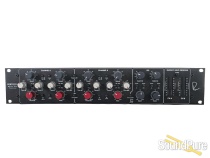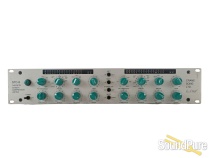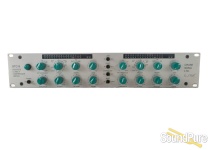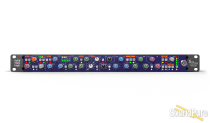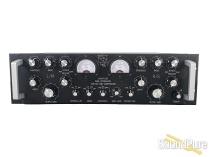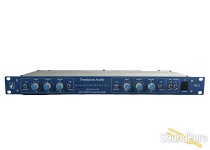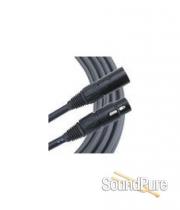-
Call Us Toll Free888-528-9703
-
Local/International (+1)919-682-5552
- Call Us! Toll Free! 888-528-9703
- Local / International (+1) 919-682-5552

Universal Audio LA-3A Reissue Audio Leveler - Used From UA
Universal Audio's faithful re-issue of the famed classic Teletronix LA-3A Audio Leveler. A rare find, especially in this clean of condition.
"Gone, Baby, Gone"
This one is sold. Don't miss the next one. Some things never even make it to the site so stay up to date on our used collection.
We get in many oddities, rare and vintage products, most of which go fast. If you're on the hunt for something specific, something unique, or something priced right, let us notify you on our used collection before the items even hit the site.
Want to know if one lands?
Notify MeWant to discuss what's coming?
Manufacturer's Description from UA
The original UREI LA-3A was designed by Brad Plunkett in the late 1960s and was still in production when I started working for him as a design engineer in 1977. The LA-3A was positioned as a smaller, lower-cost solid-state version of the LA-2A, and was designed around the same T4 optical attenuator. Brad is one of the best analog designers I've known, and so it was pretty cool to be involved in re-creating his product at UA. Here's some of the story about developing the UA clone of his LA-3A. (For those of you who worry about this stuff, no stem cells or sheep were used in this cloning.)
It seemed that in every product meeting, someone would bring up the LA-3A. We were getting requests for its return since UA came out with the re-issues of the 1176 and LA-2A; it was the natural course to see the LA-3A make a return as well. Finally in early 2004, we had a product brief and started to define our approach. We pulled out the original schematic, and got a few original units of our own.
What should we do?
We discussed all manner of "enhancements" and modifications to the original unit. We talked to a number of well-respected studio types (a Bob here, an Alan there) and decided on creating an exact replica, with three small exceptions. We added XLRs for input and output, but preserved the barrier strip for back compatibility in existing installations. We used an IEC power line connector so UL wouldn't get cranky. We included a means to switch in the most popular "gain mod" that our advisers said was most important. With this feature, users who have implemented the gain mod in their own units could add new units with the same configuration by flipping a switch, instead of soldering on the PCB.
In every other way, our LA-3A would be an exact replica of the original. We have a tradition of staying true to the original product with the UA 1176LN and UA LA-2A, so our LA-3A carries on in this way.
Where do we get the dang parts?
One of the first challenges was to find the same components that were used in the original units. Some of the discrete transistors that were used were no longer in production...bummer. While I was attempting to qualify available substitutes for the transistors, our materials guy, Sean, did his magic and located some sources for the obsolete devices, and we were under way.
"It seemed that in every product meeting, someone would bring up the LA-3A. We were getting requests for its return since UA came out with the re-issues of the 1176 and LA-2A; it was the natural course to see the LA-3A make a return as well."
Then there were the magnetics. At UREI we rolled our own transformers, so we had no off-the-shelf or old stock sources to raid. We did have some vendors who had cloned the transformers for the UA 1176LN and LA-2A, so we went back to them for this project. Like a turkey on Thanksgiving, one of our vintage LA-3As was carved up to provide samples of the original input, output, and power transformers, as well as the autoformer used to drive the T4. Another part of the carcass will be used later when we get to PCB layout.
As for the passive components, we used carbon film resistors as in the original and got the original vendors for the pots. We already had some of the pots and meters from our previous cloning of 1176 and LA-2A, just as UREI used previous design components back then. Of course, we used our T4 from the LA-2A as well, having only to fab a smaller can for the 2U package.
Let's put it together
So while parts were being gathered and fabricated, it was time to create something to put them in. We drew a schematic in our CAD program, using the same reference designators as on the original schematic. It would help our PCB silkscreen look more like the original. When we got to the PCB layout, the ways of the old came back to mess with us.
Back at UREI, we used Bishop Graphics tape and donuts for layout by hand and Xacto knife. It was painful back then and would be painful now, but we wanted the PC traces to be exactly the same on our clone. No, we didn't go looking for some tape and donuts. (We did, however, have an Xacto knife.) Instead, we took a digital picture of the traces on the PCB from our turkey carcass, flipped it over, and imported it into our PC layout program. The PCB designer, Kevin, placed all the components and traces exactly as on the old board; fighting the orthogonal trace feature of the layout program. A picture of the top of the original was used as a guide to re-create the board's silkscreen graphics, too. We were cloning like an English geneticist with a sheep.
The remaining bits of the carcass were the chassis parts and front panel (kind of like the bones you use to make soup). A few hours with the calipers and we were ready to create the original mechanical parts in our CAD program. The chassis artwork was guided by another set of imported pictures. To tie everything together, we found the same cable and used the same wire colors everywhere.
The results
A few months went by, Leon and Joe assembled the pieces, and we were looking at our first prototype of a UA LA-3A. We went out for beer.
Powering the beast up and debugging it showed a few component values were wrong on our schematic, and a few parts were in backwards (beer?). That was easy to fix.
So, Si and I then spent a bunch of time measuring with the AP and listening with our ears (our two favorite test instruments). The results were incredibly close to the original. Where there was a difference, it was very small, and in each case, the UA version was the better one.
We'd made our clone, and we don't have to keep it in a pen or shovel out anything. It's gonna enjoy roaming the range with our 1176 and LA-2A. Go buy one.
— Dennis Fink

About Manufacturer
Universal Audio Inc. was re-founded in 1999 by Bill's sons, James Putnam and Bill Putnam Jr., with two main goals: to faithfully reproduce classic analog recording equipment in the tradition of their father, and to design new digital recording tools with the sound and spirit of vintage analog technology. However, as Bill Jr. recounts, the genesis of "UA, part 2" is actually a bit more serendipitous.
Having grown up in the music industry, Bill Jr. and James ("Jim") Putnam naturally assumed that the music business is where they'd eventually end up. Jim, a touring musician and recording engineer, and their older brother Scott, a studio designer in Southern California, were the first to follow in Bill Sr.'s path. However, Bill Jr. took a more circuitous direction, working for a number of engineering companies before undertaking a doctorate in Electrical Engineering at Stanford University. It was at Stanford that Bill Jr. became closely involved in the Center for Computer Research in Music and Acoustics (CCRMA), specializing in signal processing. It was also at Stanford that Bill Jr. began to assemble a team of the best and brightest minds in the field — who continue to steer many of Universal Audio's engineering efforts to this day.
However, the precise event that led Bill and Jim to start (or "reinvent") Universal Audio in 1999 was unexpected. As Bill Jr. tells it, when Bill Sr. passed away in 1989, he and Jim were faced with the Herculean task of cleaning out their dad's workshop and storage areas. While going through Bill Sr.'s old test equipment, boxes of parts, bits and pieces of consoles, and half-cannibalized 1176 compressors, Jim came across their father’s old design notebook. The two spent the evening poring over his notes, realizing that this was the map to every technical problem their father had ever solved. It was at that moment that they decided to bring back Universal Audio and its classic products.
Fast forward a decade. Now with nearly 80 employees and legions of new customers worldwide, UA is headquartered near the Silicon Valley, in Scotts Valley, California — where our classic analog gear is still hand-built, one unit at a time. The lengths we go to deliver the exact sound and performance of classic analog audio gear is unparalleled; in fact, the goal is for UA's modern units to perform identically to well-maintained units built decades ago.
Of course, analog is only half the story. At Universal Audio, we employ the world's brightest DSP engineers and digital modeling authorities to develop our award-winning UAD Powered Plug-Ins platform, featuring the most authentic analog emulation plug-ins in the industry. Our DSP gurus work with the original hardware manufacturers — using their exact schematics, golden units, and experienced ears — to give UAD plug-ins warmth and harmonics in all the right places, just like analog.






